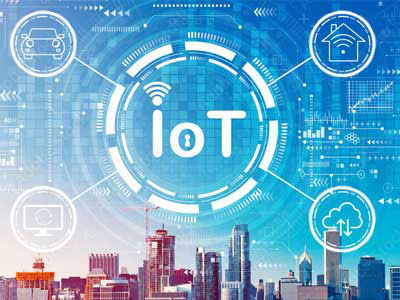Key Takeaway
The outlook for Industrial IoT is promising. By 2024, the Industrial IoT market in India is expected to reach US$5.87 billion. This growth is driven by the increasing adoption of smart technologies in manufacturing and other industries. Companies are leveraging IoT to improve efficiency, reduce costs, and enhance product quality. Additionally, the Indian government’s push for digital transformation and Industry 4.0 is fueling this trend. As more industries embrace IIoT, we can expect significant advancements in automation, predictive maintenance, and energy management, leading to a more connected and efficient industrial landscape.
Current Market Trends
The Industrial Internet of Things (IIoT) is revolutionizing the manufacturing landscape. Right now, it’s one of the most talked-about technologies in the industrial sector. Companies are increasingly integrating IoT devices into their operations to boost efficiency and reduce costs. According to recent reports, the global IIoT market is expected to grow significantly, driven by the need for operational efficiency and better asset management. Key sectors like manufacturing, energy, and logistics are leading the adoption. This trend shows that IIoT is not just a buzzword but a transformative force reshaping industries.

Key Drivers of IIoT Adoption
The industrial landscape is rapidly evolving, and IIoT (Industrial Internet of Things) stands at the forefront of this transformation. The primary driver behind this adoption is the demand for enhanced operational efficiency. With IIoT, industries can leverage real-time monitoring and predictive maintenance, significantly reducing downtime and boosting productivity. These capabilities allow for immediate responses to potential issues, ensuring that machinery and processes run smoothly without unnecessary interruptions.
Another crucial factor is the advancement in sensor technology and data analytics. Modern sensors provide precise and reliable data, which, when coupled with advanced analytics, offers actionable insights. This enables industries to make informed decisions, optimizing their operations. Furthermore, the increasing emphasis on regulatory compliance and safety standards is compelling companies to adopt IIoT solutions. These drivers collectively position IIoT as an indispensable component of modern industrial operations, providing substantial benefits that are difficult to overlook.
Challenges and Opportunities
Despite the clear benefits of IIoT, the journey towards its adoption is fraught with challenges. One significant barrier is the initial cost of implementation. Deploying IIoT infrastructure requires a substantial financial investment, which can be daunting for many companies. Moreover, integrating new technologies with existing legacy systems often poses significant technical difficulties. These systems may not always be compatible, leading to potential disruptions during the transition period.
Cybersecurity also presents a critical challenge. The connectivity that IIoT offers makes industrial systems vulnerable to cyberattacks. Ensuring robust security measures is essential to protect sensitive data and maintain operational integrity. However, these challenges also present opportunities. Companies that successfully address these issues can gain a competitive advantage. By investing in strong cybersecurity measures and seamless integration solutions, businesses can transform these challenges into stepping stones for success, positioning themselves at the forefront of industrial innovation.
Future Trends and Innovations
The future of IIoT looks promising, with several emerging trends set to drive further adoption. Edge computing, for instance, is gaining traction as it allows for faster data processing and reduced latency. By processing data closer to the source, edge computing minimizes delays and enhances the efficiency of industrial operations. This capability is crucial in environments where real-time decision-making is essential. AI and machine learning are also becoming integral, enabling more sophisticated data analysis and predictive capabilities. These technologies can identify patterns and predict maintenance needs, reducing downtime and improving operational efficiency.
Another exciting trend is the rise of 5G, which promises to enhance connectivity and support a larger number of devices. With its high speed and low latency, 5G can facilitate seamless communication between machines, making IIoT even more effective. These innovations are expected to unlock new possibilities, making IIoT even more valuable for industrial applications. As these technologies mature, they will drive significant advancements in how industries operate, making processes smarter, faster, and more reliable. Embracing these trends will be crucial for businesses looking to stay competitive in an increasingly connected world.
Long-Term Industry Impact
The long-term impact of IIoT on the industrial sector is profound. By enabling smarter and more efficient operations, IIoT is set to redefine how industries function. It facilitates better decision-making through real-time data insights, leading to improved productivity and reduced costs. Real-time monitoring and analytics allow industries to respond quickly to issues, reducing downtime and enhancing overall efficiency. Additionally, IIoT promotes sustainability by optimizing resource usage and minimizing waste. By monitoring and managing resources more effectively, industries can reduce their environmental footprint and improve sustainability.
Over time, these benefits will lead to more resilient and adaptable industrial systems. As industries continue to evolve, IIoT will remain a cornerstone of this transformation, driving continuous improvement and innovation. The ability to adapt to changing conditions and optimize operations in real time will become increasingly important. As IIoT technology advances, its impact will grow, making it an indispensable tool for modern industries. Embracing IIoT will be essential for businesses aiming to thrive in a rapidly changing industrial landscape. The future of IIoT is not just about technology; it’s about transforming the way industries operate and compete.
Conclusion
In conclusion, the outlook for Industrial IoT is overwhelmingly positive. The current market trends, key drivers of adoption, and future innovations all point towards a bright future. Despite the challenges, the opportunities far outweigh the obstacles. With its potential to revolutionize industrial operations, IIoT is poised to become an indispensable tool for industries worldwide. As we move forward, embracing IIoT will be crucial for staying competitive and achieving long-term success in the industrial landscape.
